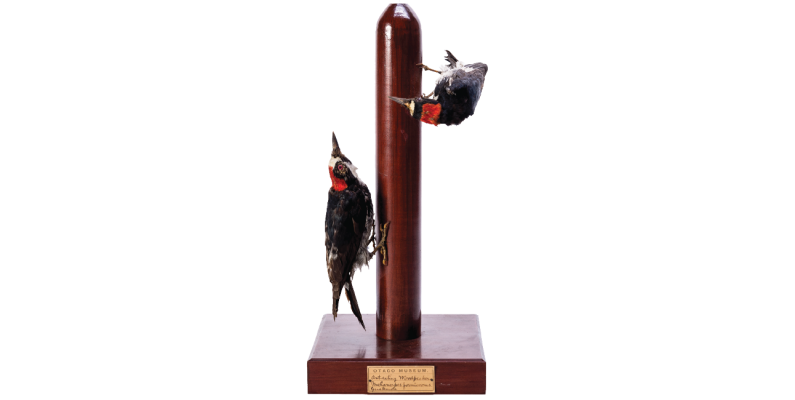
Despite stating that he didn't want a "peep show of birds" that's exactly what the first curator of Otago Museum, F W Hutton, ended up with: a collection of exotic birds destined to make any twitcher (birdwatcher) drool.
Several of the Museum’s early collectors had bird-related backgrounds, including Otto Finsch, a German ornithologist who had travelled to Siberia, Jamaica and New Zealand during the 1870s, and Andreas Reischek, an Austrian bird stuffer who had explored much of New Zealand.
The Museum’s woodpeckers were collected from a variety of locations around the world at different times. Their mounting atop wooden poles is somewhat suggestive!
Woodpeckers are mostly forest, woodland or grassland dwellers and can be found throughout the world, except in Australia, New Zealand, Madagascar and Antarctica. There are about 254 species in the family.
The name woodpecker derives from their habit of pecking wood. Drumming carries a fair distance in thick forest and this is how pairs communicate. Each species has its own pattern of drumming. Woodpeckers are typically monogamous and both help to make a nesting cavity, although the male does more drilling.
Their strong tails are often used to help prop them upright while they drum, excavate or hunt for food. They are also renowned for their super-long tongues, which are kept coiled up in a special cavity in their skull. While pecking under bark, the barbed tongue probes into their excavations to hunt for insects. Two of their four toes point forward, and two backward, which gives them good grip and enables them to move vertically up and down tree trunks.
est. 1868 is open daily in the Special Exhibitions Gallery, 10am to 5pm, until 14 April 2019. Entry is free.
Image: Acorn woodpeckers, Melanerpes formicivorus. Guatemala, Central America. Otago Museum Collection. AV11152. By Kane Fleury © Otago Museum.
